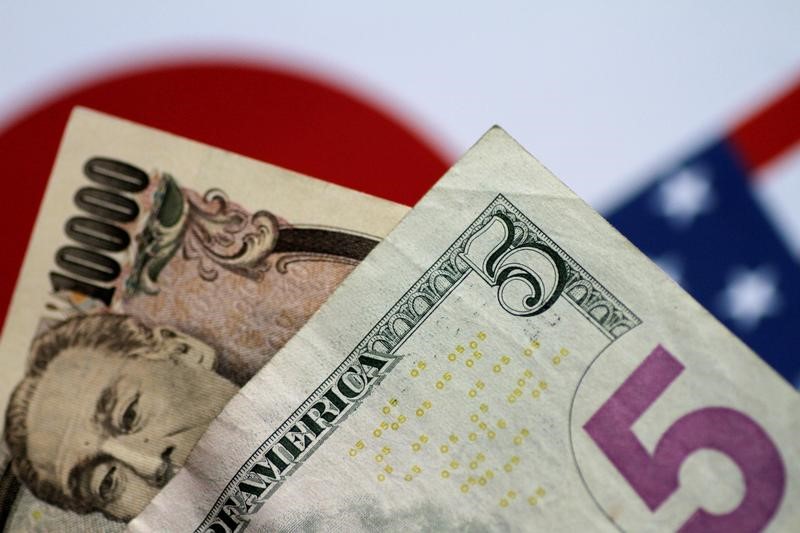Investing.com — Most Asian currencies fell Wednesday as growing bets on a slower pace of U.S. interest rate cuts supported the dollar, while the Japanese yen held steady after government officials warned of possible interventions.
Regional markets also struggled with deteriorating US-China trade ties after Washington added two major Chinese companies to a blacklist of companies linked to the Chinese military.
The move comes just before the inauguration of newly elected President Donald Trump on January 20, with Trump promising to impose steep trade tariffs on China. The Chinese yuan pair held steady after hitting its weakest level in 17 years earlier this week.
Among other Asian units, the South Korean won pair rose 0.1% amid continued political uncertainty in the country.
The Singapore dollar pair rose 0.1%, while the Indian rupee was steady at 85.8 rupees after hitting record highs above 86 rupees last week.
Dollar Upbeat on Strong Labor Market, PMI Data
Asian trading was steady on Wednesday after a sharp rise in overnight trading.
The dollar was mainly boosted by stronger-than-expected November data, which showed that the labor market remained robust. The data came just days ahead of key data for December, which will provide more definitive signals on the labor market this week.
Strong data also raised expectations that inflation will remain stable in coming months, giving the Federal Reserve more impetus to cut rates at a staggered pace.
The central bank warned it will significantly slow the pace of interest rate cuts in 2025 amid concerns about persistent inflation and strength in the labor market.
Higher US interest rates for an extended period do not bode well for Asian markets as they herald a narrowing of the interest rate differential for regional assets.
The Japanese yen remains stable amid intervention talks
The Japanese yen pair hovered around the low 158s on Wednesday, after a marginal recovery from its weakest level in almost six months.
The yen reversed its recent losses after government officials issued a verbal warning about possible intervention in the currency market, making traders more cautious about shorting the Japanese currency.
The prospect of higher US yields and the Bank of Japan’s dovish outlook battered the yen through December, pushing the USD/JPY pair close to levels that last prompted government intervention.
Traders see 160 yen as a potential intervention point.
Australian dollar flat as markets weigh mixed CPI data
The Australian dollar pair pared early losses to trade flat as traders digested mixed inflation data from the country.
Headline inflation for November was higher than expected, while underlying inflation declined slightly.
The outcome provided several clues as to when the Reserve Bank of Australia could start cutting interest rates, as core inflation still remained above the target range of 2% to 3%.
Analysts expect the RBA will not start cutting rates until the second quarter, although Wednesday’s data prompted some betting on an earlier cut.


